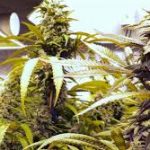In search of clean green?
Despite the expanding availability of legal medical and adult-use weed, a wide knowledge gap remains about what’s really in the plant-derived material you consume. Lab tests have revealed unwanted hitchhikers such as the fungus Aspergillus, the fungicide myclobutanil, and even the infamous bacteria E. coli.
Until testing and labeling become foolproof, bud shoppers are facing a buyer-beware scenario. During your next dispensary trip, add more questions to your usual inquiries about potency and strains. Query your budtender, or contact your delivery service to gauge the purity and origin of your flower, oils, and concentrates.
Even informed cannabis consumers may have difficulty finding clean green, so consider adding the following topics to your purchasing questions.
Can We Talk Contaminants?
Contaminants can sneak in during the many steps from seed to sale: growing, harvesting, extraction, handling, and packaging.
Those contaminants can be microbial, fungal, or chemical. Potential chemical contaminants include pesticides, fungicides, and fertilizers. Residual solvents can remain after the extraction process that produces essential oils, dabs, and concentrates. In the United States, each state might also have testing protocols that focus on a range of restricted impurities.
For example, in California before Proposition 64 ushered in new rules when the legalization law took effect in January 2018, authorities relied on the honor system to regulate pesticide use. Even though the new laws roll out incrementally in 2018, and the state required sellers to clear out inventories before testing became more stringent on July 1, 2018, there remain plenty of pesticide-laden products in circulation. California cannabis testing lab Steep Hill found that only 13.7 percent of clones tested had no detectable pesticides. The study authors — Anthony Torres, Wilson Linker, Donald Land, and Reggie Gaudino — warned that such high levels at the beginning of the production chain showed many of the subsequent products would fail to meet regulated limits.
The Questions to Ask, From an Industry Expert
There’s a critical list of questions to ask about your weed’s cultivation, according to Cooper Watts, general manager and quality control manager of Doctors Orders Stem Beach, a dispensary in Pueblo County, Colorado.
“The most important things when looking for clean cannabis are the methods being used to mitigate pests and mold as well as the nutrients being used for cultivation both in the vegetative and flowering states,” Watts said.
He suggests that you ask your cannabis retailer the following:
- Ask if the nutrients used to grow the cannabis are chemically derived; synthetic nutrients, like the liquids available in hydroponics shops; or carbon-based sources such as peat moss, kelp, or earthworm castings.
- Ask what sprays are used to mitigate pests and mold. Are they carbon-based sources, such as neem oil, or a systemic pesticide that can effectively be flushed from the plant before harvest.
- Ask how the cannabis was cultivated. Indoor grows often use synthetic nutrients and systemic pesticides. Instead of soil, they also use grow media such as coco coir and rock wool. Outdoor and greenhouse plants frequently will be sun-grown, though greenhouses will artificially set the amount of sun exposure. Soil-based grows are the best candidates for chemical-free plants.
There’s No Such Thing As ‘Organic’ Cannabis
Cannabis is still a Schedule I narcotic according to the US government’s Controlled Substances Act. Because marijuana is classified as a drug with no accepted medical use and a high potential for abuse, there also are no federal standards whether to certify weed as agriculturally organic.
In the meantime, there are organizations, such as the Cannabis Certification Council, that aren’t waiting for US Attorney General Jeff Sessions to have a sesh, and are instead offering an alternative standards certification. A common claim in the cannabis culture proffers that weed by any other name is organic, feds be damned. John Janovec, chief operations officer of CannaGrow Holdings in Pueblo, Colorado, said the solution to growing “clean green” is right under our feet. It’s all about utilizing what he calls “living soils.”
Janovec, who also is facilities manager for Category One Botanicals in Colorado, describes how high-tech greenhouses approximate what might be called “organic” cannabis.
“We implement a truly living soil that integrates all the beneficial fungi, bacteria, protozoa, nematodes and nature’s nutrients like worm castings that enable a complete biotic ecosystem that maximizes plant nutrition and thus, plant health,” said Janovec, using language earned as a Ph.D. botanist. In other words, he practices feeding the soils to feed the plants.
His organic-based cultivation also includes brewing 250-gallon vats of compost tea, a labor-intensive, but productive step that can lead to extra-potent THC levels.
So yes, it’s a lot to think about when perusing the many options available today. If you’re the kind of person who buys organic tomatoes at the market, the chances are great that you don’t want an extra side of systemic nutrients or pesticides in your flower or edible. If you’re OK with indoor grows that generally offer lower price points, more intervention in the form of synthetics — and probably more pungent terpenes — there’s no shortage of choice.
“At the end of the day,” Janovec said, “you want to supply people with a healthy plant, especially if you’re calling it medicine.”
(79)





Leave A Reply